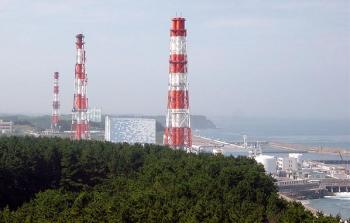Today marks two years since the beginning of the nuclear disaster at Fukushima. Put numerically, it’s two years since three reactors melted down, causing an estimated $200 billion plus in damages, and forcing the displacement of more than 160,000 people previously living in the now state designated ‘evacuation zone.’
It’s important to note that additional thousands evacuated the region surrounding Fukushima amid health and economic concerns, though as far as compensation goes, they’re marked as “volunteers” and thus, undeserving of recompense.
However, as reports begin to surface of the now state-owned Tokyo Electric Power Company recalling its victims’ compensation, it’s clear that it’s not just trust in nuclear technology in short supply in Japan, but also accountability for the disaster that has haunted northern Japan for two years.
The characteristics of nuclear technology have an intrinsic way of raising these types of questions. How do we contain radiation in the air that blows, the water that flows, and ground that grows? What do we do if we can’t contain it? Can it ever be safe to eat, drink, and breathe in and around Fukushima? If there is no safe dose of radiation, how can we justly define ‘victims’ that evacuated and ‘volunteers’ that flee? And, crucially, who is responsible when radiation can’t be contained? Tax-payers? The companies operating the facilities? The companies that design the facilities?
For now, when and if a nuclear disaster happens it’s only operators (to a point) and tax payers that have to pay for nuclear disasters. And it’s the public that likely has to pay the most.
A report out last month from Greenpeace International highlights the above, arguing that the companies supplying the component parts for nuclear reactors are largely off the hook when it comes to compensating people affected by reactors the companies build. The report calls on governments across the globe to learn from Fukushima and ensure that the companies building nuclear reactors are responsible for compensating their victims.
It turns out however, that the companies that build reactors are similar to the radiation their parts can’t contain; they proliferate, mostly undetectably, with inadequate regulatory measures. General Electric-Hitachi — which designed and built much of the Fukushima reactors — is one such company, operating for decades without community awareness, and without adequate regulation in the northern tip of downtown Toronto.
A community group has formed around the GE plant, a uranium processing facility, and caused quite a stir. Within weeks of going door to door to alert the neighbourhood, there was a well-attended community meeting, a campaign to bring GE‘s operation to a Public Hearing by the local MP, and a direct action blocking a CN train behind the facility.
Looming in the backdrop of revelations of nuclear facilities in downtown Toronto is grossly inadequate protection for Canadians in the event of a nuclear accident. The Nuclear Liability Act, Canada’s framework for financial responsibility in the event of a nuclear incident, remains unchanged since its inception in the 1970s. The Act limits the liability placed on operators at $75 million, and like elsewhere in the world, there is obligation for the companies supplying the operators to pay if there is an incident, leaving the public to pick up the rest of the tab.
Challenges to the liability limit, which materialized with citizens groups in the mid-eighties, have recently been taken up by Canada’s Auditor General, who’s called for a review of liability cap and increases as necessary.
The sorrow of Fukushima may have made it even more apparent that the nuclear disasters do happen and that present regulation around compensation is inadequate, the potential impacts of a Fukushima-like incident in southern Ontario are slightly larger than in Japan.
A Centre for Spatial Economics report notes that a Fukushima scale disaster at Pickering Nuclear Station (30km from Toronto) means uprooting 1.3 million people. If the same event happens at Darlington Nuclear Station (60km from Toronto), then that would entail close to 500 thousand people evacuated.
With houses in these potential evacuation zones valued into the billions, it’s clear that in either case, a $75 million liability cap means that people, not the nuclear operators, or the private corporations that supply them, will be picking up the rest of the tab for clean-up.
When operators have low accountability, and suppliers have even less, there is another effect besides potentially unprotected citizens; the cost of doing business in the nuclear industry remains subsidized. The only other industry operating in Canada that has this kind of protection from public comeuppance is the offshore oil and gas industry.
The more responsibility that the nuclear industry carries in the event of a disaster the more costs go up. As was apparent in the closing of Quebec’s Gentilly 2 reactor, the costs of running nuclear are already close if not over the price of shutting down the facilities.
As the Ontario Government contemplates building new and rebuilding old reactors at Darlington and extending the life of Pickering till 2020, pushing for more financial accountability for the nuclear industry becomes a vital contest. Indeed, as operators and suppliers like GE-Hitachi in Toronto look to further entrench their industry for the next few decades, we have to look no farther than the victims of Fukushima understand what’s at stake.
Steve Cornwell is an MA candidate at York University. He is interested in the interactions of social movements, science and technology. Steve has worked on energy issues with Greenpeace Canada, Environmental Defense, and Safe and Green Energy Peterborough. Follow Steve Cornwell at Twitter.com/Steve_Cornwell




